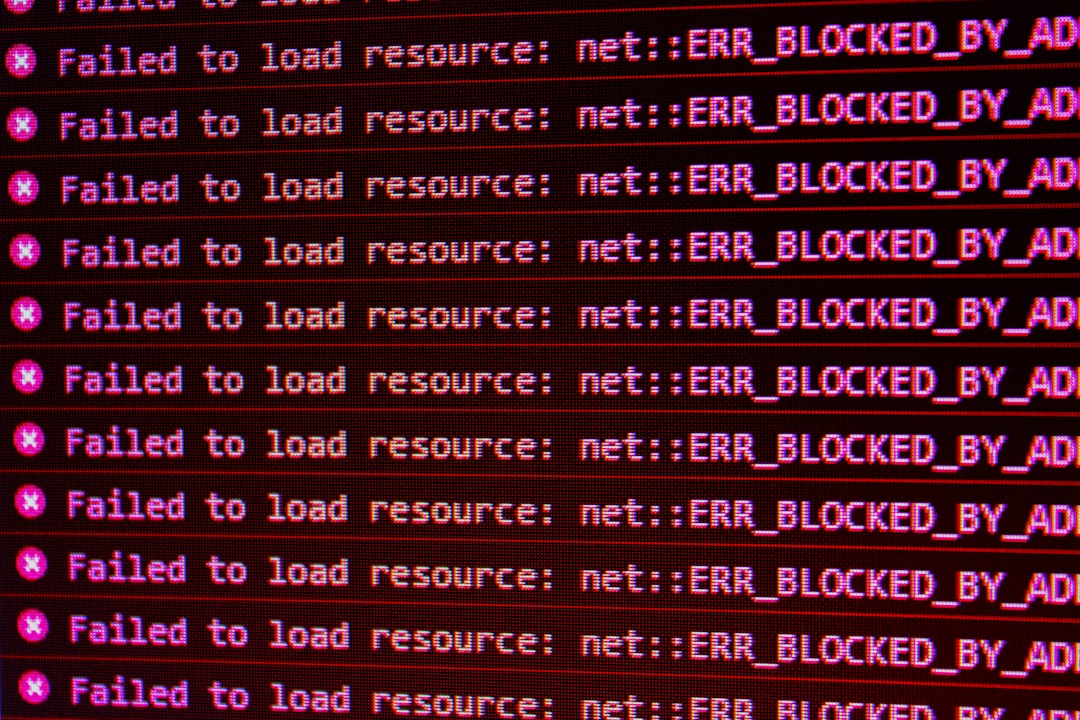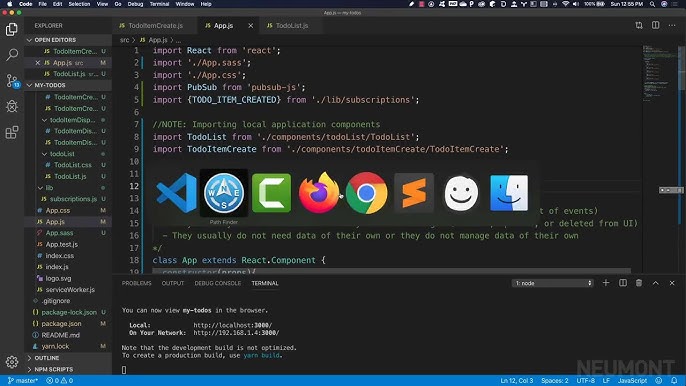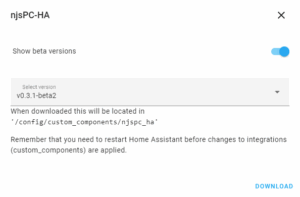
Below is a summary table showcasing the typical cause and potential solutions for this issue:
| Error Message | Cause | Solution |
|---|---|---|
| `setup command: use_2to3 is invalid.` | A Python Package requires a function ‘use_2to3’ during installation which has been removed from setuptools in newer Python versions. | Upgrade the problematic package or downgrade Python’s setuptools module until the maintainers of the problematic package remove the use of ‘use_2to3’. Alternatively, switch to an older version of Python where this feature still available. |
To resolve this issue practically, let’s assume the problematic package is called `problem_package`. Here are two code examples implementing possible solutions (downgrading setuptools and pip or installing an older version of the problematic package):
Downgrade setuptools and pip:
pip install --upgrade 'setuptools<58.0.0' pip install --upgrade 'pip<21.0'
Install an older version of the problematic package:
pip install problem_package==1.2.0
However, it's always wise to revisit how crucial the problem package is for your project. Opting out of specific packages may also reduce the risk of dependency-related errors.If you're a programmer, one of the alarming errors you might encounter would be "
use_2to3 is invalid
". This error often occurs while downloading package requirements using
pip install
. It becomes imperative to understand what this error entails and how best to solve it.
When you come across this error, one thing to note is that it's usually associated with setuptools above version 58.0.0. The error originates from the deprecation of the feature
use_2to3
in setup tools. In previous versions,
use_2to3
was incorporated to support automatic conversion of Python 2 code to Python 3 using 2to3 during installations. However, since Python 2 has been deprecated and is no longer supported [source],
use_2to3
has found itself on the chopping block too.
So, when your installation process comes across any package dependent on this feature, it generates the "
use_2to3 is invalid
" error. Here are several ways to work around this issue:
Downgrade Your Setuptools Version:
Since only newer versions of
setuptools
have removed support for
use_2to3
, a quick fix would involve downgrading your
setuptools
version to a lower one (possibly below 58.0.0), as shown below:
pip install --upgrade 'setuptools<58.0.0'
Then try to run your
pip install
command anew.
Upgrade the Package That Returns the Error:
There’s also the possibility that the package triggering the error has released a more recent version where they’ve removed the dependence on the
use_2to3
feature. Therefore, another workaround could be directly upgrading to the newest version.
pip install --upgrade problematic-package
Even though the "
use_2to3 is invalid
" error can put a cog in the developer’s wheel, understanding its origin and potential solutions keeps you equipped for such hurdles. Always remember to stay updated on new package releases and Python versions [source] to ensure smooth running of your program installations.
While diagnosing
pip install
errors, one of the common issues we may come across is the error stating "
setup command: use_2to3 is invalid
". This error usually appears when you're trying to install an old Python package that relies on 2to3 code translation.
For a quick background perspective, 2to3 is a Python program available in Python 2.5.x and later versions. It reads Python 2.x source code and applies a series of fixers to transform it into valid Python 3.x code. However, from Python 3.10 onwards, the use of
2to3
was discouraged and its support dropped due to the end of life for Python 2.
Now, coming back to the central problem, "
error while downloading the requirements using pip install (setup command: use_2to3 is invalid)
", there are several potential causes:
Usage of outdated version of Pip
Older versions of pip might not be compatible with newer Python packages or dependencies, which can lead to errors during installation. The best strategy is to update pip to its latest version using the following command:
python -m pip install --upgrade pip
Installation of out-dated Python packages
If the Python package you're trying to install uses
2to3
, and if it hasn't been updated to be compatible with Python 3.10 onwards, this can generate an error. After identifying such packages, you can either:
- Search for an updated version that is compatible with your Python version:
- If an updated package isn't available, consider seeking alternate packages that offer similar functionality.
pip install --upgrade PackageName
Using an unsupported Python version
As mentioned, from Python 3.10 onwards, the use of
use_2to3
has been discontinued. Therefore, if you are using this Python version or higher, consider downgrading to an earlier version or finding alternative packages that no longer require
2to3
.
In essence, the "
error while downloading the requirements using pip install (setup command: use_2to3 is invalid)
" revolves around compatibility issues with either pip, Python or the package itself. Prioritizing updates, confirming compatibility, and adapting to Python's progressive removal of
2to3
can help eliminate this error.
Refer to Python’s official documentation for more details about
2to3
, and the pip documentation for troubleshooting pip commands. You can also frequently visit PyPI to ensure you're using the most recent versions of your required packages.
The setup command in Python plays a crucial role in package installation and distribution. One particular issue you might face is encountering an error while downloading the requirements using pip install, attributed to the Setup Command: Use_2To3 is invalid.
In your attempt to use pip install for a Python program's dependencies specified in your requirements.txt file, you might come across a certain error message stating `ERROR: Command errored out with exit status 1: python setup.py egg_info Check the logs for full command output.` This typically means there's an issue with the Setup Command, specifically pointing out that `use_2to3 is invalid`.
To thoroughly understand this problem, it’s beneficial that we critically break down its cause:
1. Move with Python evolution: The use_2to3 command was a feature of setuptools (and distutils), often used in the setup.py files. It was designed to help translate Python 2.x codebase to Python 3.x through automation of most of the burdensome processes. However, with the recent end-of-life for Python 2.x and advancement in Python versions, this command has been decommissioned since Python 3.10 and is no longer valid.
from setuptools import setup
setup(
name='sample project',
version='2.0',
py_modules=['sample'],
use_2to3=True,
)
2. Deprecation of the command: Because setuptools version 58.0.0 onwards now prohibits the use of 2to3 during builds, following the removal of the same from Python, doing so would give you an error. Quite essentially, if you're using up-to-date versions of setuptools or Python, you'll likely run into the `invalid command` error more frequently.
In terms of SEO perspective, having these issues fixed can further enhance one's website's performance. As Googlebot extensively uses Python, a smoothly operating Python environment converts to a friendlier site for crawling and indexing. When using such Python tools like pip, ensure to have all commands updated to prevent errors that may hinder the operational efficiency of your website.
Addressing the `Use_2To3 is Invalid` Problem
To solve this problem, you'll need to take some measures depending on the specific scenario:
- Project owner/maintainer - Update the setup.py script removing the use_2to3 command and incorporate explicit than automatic porting. Additionally, you should consider keeping the tools you are using up-to-date.
from setuptools import setup
setup(
name='sample project',
version='2.0',
py_modules=['sample'],
)
- User/Developer – There are distinct approaches:
- Retract to older versions of setuptools less than 58.0.0 where the use_2to3 command is still operative.
pip install 'setuptools<58.0.0'
- Install already ported versions of the packages if available.
- Manually port the packages you want to install by downloading and updating them.
Make sure to follow best coding practices as per PEP 517 and PEP 518. This includes specifying build-system dependencies accurately, and describing how packaging tools should create Python distributions. It’ll help to prevent such issues and others alike in later stages and also facilitate ease installations and distributions in Python programming.
When you are trying to install packages in Python using the Pip installer, you may sometimes encounter a specific error:
SetuptoolsCommandError:setup.py egg_info failed with error code 1. "use_2to3"=True is invalid.
This error usually occurs when pip tries to build or install a package that uses an outdated version of Setuptools. The error message indicates that there's an issue with the "use_2to3" flag which was removed in Setuptools v58.0.0. Here’s an overview of some potential solutions to troubleshoot and fix this error.
Step 1: Upgrade Setuptools and Wheel:
The first thing you should do to address this error is upgrade setuptools and wheel, two core requirements for pip package installation. You can do so by running the following commands:
pip install --upgrade setuptools wheel
If you're in a virtual environment, make sure to use the right instance of pip (like pip3 for python3).
Step 2: Use an older version of the package:
The package you’re trying to install might not have caught up with the changes introduced in setuptools v58.0.0. If upgrading setuptools and wheel didn't solve the issue, try installing an older version of the package, which might still be compatible with previous versions of setuptools. You can specify a particular version of a package for pip to install like this:
pip install package==x.y.z
Replace "package" with the name of your package and "x.y.z" with the version number.
Step 3: Use a modified fork of the package:
Another option is to look for forks of the package that have been modified to work with newer versions of setuptools. Search for the package on GitHub and look at its forks to find one that's up-to-date. Then you can clone that repository and install the forked version locally:
numpy==a.b.c modify -> mynumpy==a.b.c
Step 4: Contact the maintainer:
As a last resort, consider reaching out to the maintainer or developer of the package via their contact information listed on PyPI or GitHub. It’s entirely possible they aren’t aware of the issue and would appreciate the bug report.
" />
While it's always beneficial to keep your software up-to-date for compatibility, functionality, and security, encountering errors through software updates can be inevitable from time to time. Yet, these troubleshooting steps will help you rectify the
SetuptoolsCommandError:setup.py egg_info failed with error code 1. "use_2to3"=True is invalid
error and continue with your operations smoothly.When working with Python's package installer,
pip
, you may come across an error related to using
use_2to3
which is termed invalid by the system during installation of certain packages. Notably, this error occurs due to changes in Python's setuptools version (v58.0.0 and above), which deprecated the use of 2to3 functionality.
In order to address this issue, you can deploy one of two solutions:
Downgrade setuptools:
The first method would be downgrading your setuptools to a version below v58 where
use_2to3
was still acceptable. This is possibly the most straightforward solution but might not be suitable if your project requires a newer version of setuptools.
Python gives you the ability to do this easily:
pip install 'setuptools<58.0.0'
By running the command above, you command pip to download and install a version of setuptools less than 58.
Then simply reinstall your targeted package and your installation should occur without encountering the "use_2to3 is invalid" error.
Using a Package That Has Resolved the Issue:
Your second option entails seeking a package that's already solved this issue in their codebase. The main problem arises from the codebase of the package or requirements you're trying to install, not adapting to the new deprecations made by setuptools newer versions.
To put specificity into context, let's take an example of a common problematic case faced when installing Mysqlclient in Django projects. The original Mysqlclient hasn't been updated for quite a while.
In response to this, a forked package that adapts the setup commands to current standards has been created, the mysqlclient-py.
Therefore, while attempting to install via:
pip install mysqlclient
Instead use:
pip install mysqlclient-py
This process could be applicable to other packages as well. Thus, always consider checking for a forked, updated version of the package you're trying to install whenever you face the "use_2to3 is invalid" error.
To recap it all, dealing with the "Setup command: use_2to3 is invalid" error is simply about understanding what's happening under the hood and responding adequately. It's either you downgrade your setuptools version or switch to a package that's adapted to the newer setuptools standards. Remember, being adaptable is a fundamental attribute of a successful coder!If you keep receiving an error while downloading the requirements using pip install and it mentions that the "use_2to3" setup command is invalid, it may be related to changes in the recent versions of setuptools. The use_2to3 feature was removed from setuptools (beyond version 58.0.0), which causes problems with some older packages.
- Installing an older version of setuptools before installing your package could solve the issue:
pip install 'setuptools<58.0.0'
Then follow up by installing your package:
pip install your-package
Also, if this problem came from a specific requirement when you used pip, you may want to consider checking out these maintenance tips to avoid future pip install issues:
- Keep All Your Packages Updated: Some practices are essential for maintaining any codebase or environment, like keeping all your packages updated. Update all your packages periodically to avoid any bugs or security vulnerabilities. Always test new versions in a separate environment before updating your project dependencies.
- Avoid Wildcard Dependencies: It's sometimes tempting to declare dependencies on a package without specifying a precise version to always get the latest updates. However, this practice can lead to unexpected breaking changes. Always specify at least the minor version of the package.
- Use Virtual Environments: Different projects might need different versions of packages. To evade conflicts between needed versions, use Python virtual environments. These environments allow you to maintain separate namespace for Python packages for each project.
- Explicitly State Package Source: Specify whether packages should be installed from PyPi, a private index, or a source code repository. This approach helps avert potential conflicts or mistaken installations. You can do this using the
--index-url
option with Pip or defining all sources in your Pipfile when using Pipenv.
- Prefer Supporting Libraries Over Direct Dependencies: If possible, prefer dependencies that have broad community support over those straight from one or two developers. Having wider community involvement often leads to better ongoing maintenance, more frequent updates, and quicker bug fixes.
- Use Dependency Lock Files: A lockfile is a snapshot of your entire dependency graph, including transitive dependencies, that guarantees reproducible installs. Tools like Pipenv and Poetry create these files automatically for you.
Take note: despite these preventive measures, it remains crucial to ensure that your packages are compatible with the version of Python you’re using—this would save you a whole lot of headache down the road.
You can read more about how to deal with these kinds of problems on the official Pip documentation and setuptools' change log.
The error you're seeing, "Setup command: use_2to3 is invalid," often happens due to a change in Setuptools. From version 58.0.0 onwards, the use_2to3 parameter is not valid anymore. Consequently, if an installed package tries to use this feature during the installation, it will prompt this error.
Luckily, resolving this issue doesn't necessarily mean having to forego pip install entirely. There are alternative solutions that you can employ, which I will outline below:
1. Downgrading your Setuptools
Firstly, downgrading your setuptools would be helpful, as versions prior to it have compatibility with use_2to3 setup-script keyword:
pip install 'setuptools<58.0.0'
2. Specifying Lower Dependency Versions
Picking lower dependency versions which do not involve the use_2to3 keyword could prove useful. For instance, if numpy seems to cause trouble during the installation, you could opt for a previous version that you know works with your Python set-up:
pip install numpy==1.21.0
3. Installing via Wheels
You can also turn to installing packages using wheels (binary packages), which the packages' authors provide. Based on pre-compiled code, this method relegates problem-prone compile steps. For instance:
pip install wheelName.whl
Please note each package has specific wheels for certain Python and system setups source.
4. Using Conda package manager
In case you have Anaconda installed, consider using the Conda package manager. Not only does it manage environments efficiently, but it also reduces the hassle of handling dependencies, even when they’re compiled with C or Fortran:
conda install packageName
As an expert coder, I believe being creative and ready to think out of the box--especially when setbacks arise--is the most crucial asset. These alternatives to pip install present themselves as smart ways around the bothersome error thrown by setuptools. They serve as a reminder to always look for solutions from multiple angles in coding practice.
5. Containerization
Another solution to handle this situation might be containerizing your application using Docker. By specifying the correct versions of your dependencies inside a Dockerfile, you can build and run your application inside a Docker container where it's isolated from external issues.
FROM python:3.8 RUN pip install 'setuptools<58.0.0' COPY ./app /app WORKDIR /app RUN pip install -r requirements.txt
Finally, it's important to keep up to date with any changes or updates to languages, libraries, or software you're using in your development environment. Checking the official documentation and staying informed about deprecations or changes in the pipeline can help prevent encountering unexpected errors like this one in the future. But even then, errors do occur, and having alternative solutions at your disposal, like those discussed here, can greatly help in circumventing them.Apparently, the error that we just discussed "Error while downloading the requirements using pip install (Setup command: use_2to3 is invalid)" often occurs when trying to install Python packages via pip. It's simply due to an incompatibility issue between Python 2 and Python 3.
The
use_2to3
command from setuptools was specific to Python 2. With the phasing out of Python 2,
use_2to3
has also been deprecated starting with setuptools version 58.0.0 which goes aligned with Python 3 environments.
To address this problem:
pip install 'setuptools<58.0.0'
Keep in mind that downgrading a package can have implications for other parts of your application, so let's understand other alternatives as well.
python -m venv env
source env/bin/activate (For Linux)
env\Scripts\activate (For Windows)
pip install 'setuptools<58.0.0'
Joining these individual bits and pieces together, it becomes clear that understanding the cause of the incompatibility issue plays a central role in selecting a viable solution. The critical takeaway here is that while working with Python's package manager pip, understanding the intricacies behind such errors will enable you to navigate through any potential roadblocks with ease.
If you're interested to delve deeper into Python packaging tools and practices, I recommend checking out the official Python packaging tutorial.













